Raising awareness on HIV/AIDS and Nanomedicine in South Africa
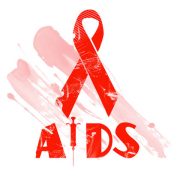 The South African Agency for Science and Technology Advancement (SAASTA) in partnership with the Nanotech and Biotech (Nabio) Consulting will as part of raising awareness on HIV/AIDS host the first Symposium on Nanomedicine and HIV/AIDS in South Africa on Friday, 4 December 2015. The symposium will take place at the SAASTA Auditorium – 211 Nana Sita Street, Didacta Building, Pretoria Central.
The South African Agency for Science and Technology Advancement (SAASTA) in partnership with the Nanotech and Biotech (Nabio) Consulting will as part of raising awareness on HIV/AIDS host the first Symposium on Nanomedicine and HIV/AIDS in South Africa on Friday, 4 December 2015. The symposium will take place at the SAASTA Auditorium – 211 Nana Sita Street, Didacta Building, Pretoria Central.
What delegates say about NanOEH 2015
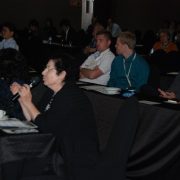 About 150 delegates attended the 7th international symposium on Nanotechnology, Occupational and Environmental Health which was held in Limpopo Province recently. The symposium provided a scientific forum for researchers and practitioners to present and discuss the latest research on occupational and environmental health issues and risks associated with nanotechnology.
About 150 delegates attended the 7th international symposium on Nanotechnology, Occupational and Environmental Health which was held in Limpopo Province recently. The symposium provided a scientific forum for researchers and practitioners to present and discuss the latest research on occupational and environmental health issues and risks associated with nanotechnology.
Can more be done to ensure responsible technology innovation?
 A well-known science communicator, researcher on risk innovation and the responsible development and use of emerging technologies, Professor Andrew Maynard, presented on the need for a model for responsible innovation at the 7th International Symposium for Nanotechnology, Environmental and Occupational Health.
A well-known science communicator, researcher on risk innovation and the responsible development and use of emerging technologies, Professor Andrew Maynard, presented on the need for a model for responsible innovation at the 7th International Symposium for Nanotechnology, Environmental and Occupational Health.
What does the exposure to these nanoparticles in the long run mean to our health?
 The Deputy Director-General of Technology Innovation at the Department of Science and Technology, Mr Mmboneni Muofhe, delivered the opening address at the 7th International Symposium on Nanotechnology, Occupational and Environmental Health, the first to be held in South Africa and the continent.
The Deputy Director-General of Technology Innovation at the Department of Science and Technology, Mr Mmboneni Muofhe, delivered the opening address at the 7th International Symposium on Nanotechnology, Occupational and Environmental Health, the first to be held in South Africa and the continent.
Gauteng Nanoscience Young Researchers’ Symposium 2015
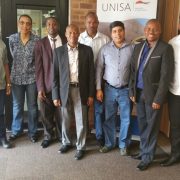 The 5th Gauteng Nanosciences’ Young Researchers Symposium was hosted by the Nanotechnology and Water Sustainability Research Unit, College of Science, Engineering and Technology, University of South Africa on 9 October 2015. The symposium was held at the Science Campus and attracted about 100 academics and students.
The 5th Gauteng Nanosciences’ Young Researchers Symposium was hosted by the Nanotechnology and Water Sustainability Research Unit, College of Science, Engineering and Technology, University of South Africa on 9 October 2015. The symposium was held at the Science Campus and attracted about 100 academics and students.
Nanotechnology economy: Can it be an alternative solution to close the poverty gap?
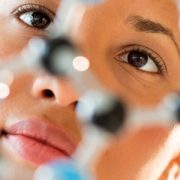 If a developing country such South Africa wishes to break the poverty cycle, reduce inequalities and improve health, it needs to have a strong and effective science, technology and innovation (STI) systems investment of up to 3.5% of the country’s GDP, as reported by scientists advising UN Secretary General, Ban Ki Moon, on sustainable development.
If a developing country such South Africa wishes to break the poverty cycle, reduce inequalities and improve health, it needs to have a strong and effective science, technology and innovation (STI) systems investment of up to 3.5% of the country’s GDP, as reported by scientists advising UN Secretary General, Ban Ki Moon, on sustainable development.
SAASTA and partners at Sustainability Week 2015
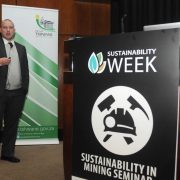 The South Agency for Science and Technology Advancement participated in the Sustainability Week 2015 as sponsor for the first time. SAASTA is a business unit of the National Research Foundation (NRF), and is mandated to advance public awareness, appreciation and engagement of science, engineering and technology in South Africa.
The South Agency for Science and Technology Advancement participated in the Sustainability Week 2015 as sponsor for the first time. SAASTA is a business unit of the National Research Foundation (NRF), and is mandated to advance public awareness, appreciation and engagement of science, engineering and technology in South Africa.
The 51st National Science Olympiad Awards
 The 51st National Science Olympiad awards to celebrate excellence in science teaching and learning took place at Emperors Palace on 02 July 2015. The annual event recognises Southern Africa’s top young science achievers and schools in the disciplines of physical and life sciences. The Minister of Science and Technology, Naledi Pandor, congratulated the winners.
The 51st National Science Olympiad awards to celebrate excellence in science teaching and learning took place at Emperors Palace on 02 July 2015. The annual event recognises Southern Africa’s top young science achievers and schools in the disciplines of physical and life sciences. The Minister of Science and Technology, Naledi Pandor, congratulated the winners.
SAASTA’s Nanotechnology Education Material engages international learners
 The National Nanotechnology Infrastructure Network is a partnership of 14 US leading universities funded by the National Science Foundation. Its primary focus is to provide state-of-the art facilities for nanoscale researchers. In addition, NNIN has a wide ranging education and outreach program that reaches more than 60,000 each year.
The National Nanotechnology Infrastructure Network is a partnership of 14 US leading universities funded by the National Science Foundation. Its primary focus is to provide state-of-the art facilities for nanoscale researchers. In addition, NNIN has a wide ranging education and outreach program that reaches more than 60,000 each year.
Dendrimers: Tiny tools to tackle diagnostics
 Imagine a particle so small, yet so powerful that its use in diagnostic biosensors could lead to quicker and simpler detection of diseases and toxic substances. Dendrimers are ball-shaped nano-molecules of about 12 nm – 16 nm and Dr. Omotayo Arotiba’s research is all about how these small molecules are being used to improve diagnostic methods for cholera and HIV.
Imagine a particle so small, yet so powerful that its use in diagnostic biosensors could lead to quicker and simpler detection of diseases and toxic substances. Dendrimers are ball-shaped nano-molecules of about 12 nm – 16 nm and Dr. Omotayo Arotiba’s research is all about how these small molecules are being used to improve diagnostic methods for cholera and HIV.
Duckweed watches our waterways

Few of us ever give a second thought to rinsing a paint brush, cleaning make-up off, or washing a clothing item. With an increase in commercial products containing nanoparticles, we should perhaps be asking how these particles influence the world around us as they enter the environment and our waterways. How will ecosystems cope? Will this impact the quality of drinking water?
Long live the lithium-ion battery
 Laptops and cell phones that run out of battery power are, inconveniently, part of our lives. Most portable electronic devices, as well as electric cars, are powered by rechargeable lithium-ion batteries. Because of their critical function, nanotechnologists are focusing their gaze on finding effective improvements to enhance the performance and lifespan of these batteries.
Laptops and cell phones that run out of battery power are, inconveniently, part of our lives. Most portable electronic devices, as well as electric cars, are powered by rechargeable lithium-ion batteries. Because of their critical function, nanotechnologists are focusing their gaze on finding effective improvements to enhance the performance and lifespan of these batteries.
SA’s titanium industry holds huge scope for modern building design: self-cleaning windows
 Some windows are just hard to clean. Staking its claim on the world map for beneficiating titanium, South African nanomaterials can soon make light work of cleaning ceiling windows such as this in a museum in Vienna. South Africa currently has the second-largest global reserves of titanium.
Some windows are just hard to clean. Staking its claim on the world map for beneficiating titanium, South African nanomaterials can soon make light work of cleaning ceiling windows such as this in a museum in Vienna. South Africa currently has the second-largest global reserves of titanium.
Why should we get excited about rust?
 What you may think of as an irritating, orange-red rust gradually eating away at metal surfaces, is actually just one form of a multipurpose tool with life-saving capabilities. Rust is really just iron oxides. Interestingly, less is more when it comes to the iron oxides. Some of these uses require nano-sized particles of iron oxides; particles no larger than 100 nanometres in width.
What you may think of as an irritating, orange-red rust gradually eating away at metal surfaces, is actually just one form of a multipurpose tool with life-saving capabilities. Rust is really just iron oxides. Interestingly, less is more when it comes to the iron oxides. Some of these uses require nano-sized particles of iron oxides; particles no larger than 100 nanometres in width.
UWC drives the first African-led experiment in physics at CERN
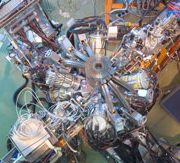 About fifteen years ago, as an undergraduate student in Spain, I convinced a few friends of mine to apply for a Summer School at CERN, the European Organization for Nuclear Research. With over 15,000 scientists and engineers from all over the world working in unison at revealing the secrets of nature, CERN is probably the most extraordinary research institution in the world.
About fifteen years ago, as an undergraduate student in Spain, I convinced a few friends of mine to apply for a Summer School at CERN, the European Organization for Nuclear Research. With over 15,000 scientists and engineers from all over the world working in unison at revealing the secrets of nature, CERN is probably the most extraordinary research institution in the world.
Workshop on exposure assessment to Nanoparticles
 The Toxicology Section at the National Institute for Occupational Health (NIOH) in collaboration with the World Health Organisation (WHO), recently hosted a workshop on Exposure Assessment to Nanoparticles. This workshop was held at the Sunnyside Park Hotel, Johannesburg on the 2nd – 3rd October 2013 and it was the first of its kind to be held in South Africa.
The Toxicology Section at the National Institute for Occupational Health (NIOH) in collaboration with the World Health Organisation (WHO), recently hosted a workshop on Exposure Assessment to Nanoparticles. This workshop was held at the Sunnyside Park Hotel, Johannesburg on the 2nd – 3rd October 2013 and it was the first of its kind to be held in South Africa.
Gold nanoparticles protect proteins from heat shock

Anybody who has cooked an egg will know that as soon as you apply some heat, the egg starts to harden. The more heat you apply and the longer you apply it for, the harder the egg gets. This is thanks to the protein in the eggs unfolding as heat is applied, forming new bonds, clumping together (aggregating) and hardening. While that might be a good outcome for your breakfast, what happens inside our own bodies when proteins are stressed? Scientists at the University of Zululand are asking just this question.
From Devils to Darlings: How we use Venoms, Toxins and Nanotechnology to Save Lives
 The sight of a snake on the porch or a spider in the bathroom is enough to send most people running for the hills, but scientists have managed to stick around long enough to utilise the creepy crawler’s greatest scare tactic: venom. In the near future these otherwise-lethal substances could be harnessed to cure and treat humanity’s most feared diseases.
The sight of a snake on the porch or a spider in the bathroom is enough to send most people running for the hills, but scientists have managed to stick around long enough to utilise the creepy crawler’s greatest scare tactic: venom. In the near future these otherwise-lethal substances could be harnessed to cure and treat humanity’s most feared diseases.
Nanofibres and nanomembranes: the buzzwords at SA’s third Nano Summer School
 South Africa’s Nanoscience and Nanotechnology Summer School is as much about training a growing generation of students as it is about focusing attention on emerging nanotechnology products and processes in the country. The University of the Western Cape played host to the third such summer school at the end of November as a diverse group of national and international scientists shared insights into the “impact of nanotechnology in water treatment and management”.
South Africa’s Nanoscience and Nanotechnology Summer School is as much about training a growing generation of students as it is about focusing attention on emerging nanotechnology products and processes in the country. The University of the Western Cape played host to the third such summer school at the end of November as a diverse group of national and international scientists shared insights into the “impact of nanotechnology in water treatment and management”.
Detecting the silent killer of men
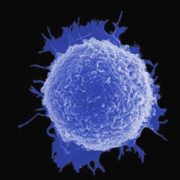 Ground breaking research is under way towards a possible non-invasive early detection method for a cancer killing thousands of men annually. Rated as the second most common cancer in men globally, prostate cancer follows a natural course, starting as a tiny group of cancer cells that could grow into mature tumours.
Ground breaking research is under way towards a possible non-invasive early detection method for a cancer killing thousands of men annually. Rated as the second most common cancer in men globally, prostate cancer follows a natural course, starting as a tiny group of cancer cells that could grow into mature tumours.
Nano-TiO2 a bright solution for removing dyes from wastewater
 Your brightly coloured clothes might have a dark story to tell. Hidden in the bright oranges, blues and reds of textile wastewater are some pretty harmful pollutants. Difficult to degrade, these compounds end up in waterways and may well outlast your outfit. Can we clean up and re-use water effluent from the textile industry? Nanotechnologists can tell a lighter side of the tale using special nano-based catalysts.
Your brightly coloured clothes might have a dark story to tell. Hidden in the bright oranges, blues and reds of textile wastewater are some pretty harmful pollutants. Difficult to degrade, these compounds end up in waterways and may well outlast your outfit. Can we clean up and re-use water effluent from the textile industry? Nanotechnologists can tell a lighter side of the tale using special nano-based catalysts.
Giving polluted water a “shock”
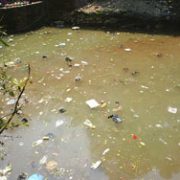 Scientists say that a combination of electricity and nanotechnology could offer a cheap solution for treating polluted water. Patented technology emanating from the research of Prof Leslie Petrik at the University of the Western Cape (UWC) and colleagues at the Department of Electrical and Electronic Engineering at Stellenbosch University has moved the field ahead with a nanobased approach.
Scientists say that a combination of electricity and nanotechnology could offer a cheap solution for treating polluted water. Patented technology emanating from the research of Prof Leslie Petrik at the University of the Western Cape (UWC) and colleagues at the Department of Electrical and Electronic Engineering at Stellenbosch University has moved the field ahead with a nanobased approach.
Aptamers pave the way for diagnostcs in HIV and malaria monitoring
 Yes or no? If yes, how much? Perfecting diagnostics for health monitoring is a quick win for human healthcare challenges in SA. Newly patented aptamer-based biorecognition agents for malaria and CD4 monitoring may open fresh opportunities for rapid diagnostics in the sector. For South Africa, the latter is particularly relevant, opening up the door to on-site diagnostics of HIV positive patients’ CD4 count.
Yes or no? If yes, how much? Perfecting diagnostics for health monitoring is a quick win for human healthcare challenges in SA. Newly patented aptamer-based biorecognition agents for malaria and CD4 monitoring may open fresh opportunities for rapid diagnostics in the sector. For South Africa, the latter is particularly relevant, opening up the door to on-site diagnostics of HIV positive patients’ CD4 count.
DST Workshop for the draft of the Code of Conduct for nanotechnology research and development
 The Department of Science and Technology has, through its established Nanotechnology Ethics Committee, developed a Code of Conduct for nanotechnology research and development, which is currently in a draft form.
The Department of Science and Technology has, through its established Nanotechnology Ethics Committee, developed a Code of Conduct for nanotechnology research and development, which is currently in a draft form.
Graphene synthesis using sticky tape and pencil
 The all new Zeta pipette tips, which promise a breakthrough for all scientists that suffer from pipetting errors, will soon enter the laboratory market. These are graphene-based nanocomposite-coated tips that reduce electrical charges transferred to droplets of liquid during the pipetting process.
The all new Zeta pipette tips, which promise a breakthrough for all scientists that suffer from pipetting errors, will soon enter the laboratory market. These are graphene-based nanocomposite-coated tips that reduce electrical charges transferred to droplets of liquid during the pipetting process.
Nanomedicine for cancer: a new approach to radiotherapeutics
 One in three people will develop cancer in their lifetime, and 25% will die from that cancer. In order to combat the disease, more than 50% of cancer patients will receive radiation therapy (RT). (American Cancer Society, Cancer Facts and Figures 2013, Atlanta: American Cancer Society; 2013.) The application of nanotechnology to RT holds the potential to radically improve the results of this widely-used therapy.
One in three people will develop cancer in their lifetime, and 25% will die from that cancer. In order to combat the disease, more than 50% of cancer patients will receive radiation therapy (RT). (American Cancer Society, Cancer Facts and Figures 2013, Atlanta: American Cancer Society; 2013.) The application of nanotechnology to RT holds the potential to radically improve the results of this widely-used therapy.
A tiny solution to a big problem: Does nanotechnology hold the key to curing Ebola?
 The recent outbreak of Ebola virus disease (EVD) in West Africa has claimed the lives of thousands of people and has highlighted an urgent need for experimental treatments to stop the spread of the virus. Nanotechnology could be one way of approaching the problem.
The recent outbreak of Ebola virus disease (EVD) in West Africa has claimed the lives of thousands of people and has highlighted an urgent need for experimental treatments to stop the spread of the virus. Nanotechnology could be one way of approaching the problem.
Focus your imagination on the possibilities – nanotechnology for health and medicine
 If you haven’t yet heard the word “nano”, then you are missing out. What you are missing is one of the biggest leaps that science has taken in a long, long time. The fuss is really about particles so tiny that we need the world’s most powerful microscopes just to be able to see them.
If you haven’t yet heard the word “nano”, then you are missing out. What you are missing is one of the biggest leaps that science has taken in a long, long time. The fuss is really about particles so tiny that we need the world’s most powerful microscopes just to be able to see them.
Beijing Youth Science Creation Competition (BYSCC) 2014
 The Beijing Youth Science Creation Competition (BYSCC) is an initiative supported by the Beijing Association for Science and Technology (BAST), which aims to encourage innovation and its application, and to promote a scientific culture among learners from different China districts and from around the world.
The Beijing Youth Science Creation Competition (BYSCC) is an initiative supported by the Beijing Association for Science and Technology (BAST), which aims to encourage innovation and its application, and to promote a scientific culture among learners from different China districts and from around the world.
Role Modelling Campaign, King Williams Town (Ndevana), 31 May 2014
 The National Research Foundation and the South African Agency for Science and Technology Advancement were requested by Reverend Thobela Willem who is a member of the School Governing Body at Simzamile Senior Secondary School to organise and facilitate a role-modelling campaign in the area of Ndevana in King Williams Town on 31 May 2014.
The National Research Foundation and the South African Agency for Science and Technology Advancement were requested by Reverend Thobela Willem who is a member of the School Governing Body at Simzamile Senior Secondary School to organise and facilitate a role-modelling campaign in the area of Ndevana in King Williams Town on 31 May 2014.
UniZulu Science Centre Workshop, Richards Bay, 21-22 May 2014
 NPEP in partnership with the Unizulu Science Centre organised a two day nanotechnology workshop that took place at the science centre in Richards Bay on the 21-22 May 2014. Through a grant from SAASTA|NPEP, the Unizulu science centre developed a number of resources on nanotechnology.
NPEP in partnership with the Unizulu Science Centre organised a two day nanotechnology workshop that took place at the science centre in Richards Bay on the 21-22 May 2014. Through a grant from SAASTA|NPEP, the Unizulu science centre developed a number of resources on nanotechnology.
Nanotechnology Educators Development Workshop, Klerksdorp (11-12 August 2014)
 Through its many outreach and awareness programmes, SAASTA aims to entice learners to pursue careers in science and to instil in people an enthusiasm and deeper understanding and appreciation of science in their daily lives. In line with these aims, SAASTA coordinates numerous projects that entail school science support through educator development programmes.
Through its many outreach and awareness programmes, SAASTA aims to entice learners to pursue careers in science and to instil in people an enthusiasm and deeper understanding and appreciation of science in their daily lives. In line with these aims, SAASTA coordinates numerous projects that entail school science support through educator development programmes.
National Schools Debates Competition 2014 – Provincial Workshops (20 September 2014)
 The National Schools Debates Competition is an initiative that gives learners in Grades nine to 11 an opportunity to develop their research, critical thinking and information literacy skills, as well as their ability to work as a team to present logical, clear arguments.
The National Schools Debates Competition is an initiative that gives learners in Grades nine to 11 an opportunity to develop their research, critical thinking and information literacy skills, as well as their ability to work as a team to present logical, clear arguments.
Learners Focus Week in Energy 2014, University of Limpopo (30 June – 05 July 2014)
 The fourth edition of the Learners Focus Week (LFW) in Energy was held at the University of Limpopo, Turfloop Campus, in Polokwane from 30 June to 05 July 2014. The LFW is an initiative of the Department of Energy (DoE), with support from various energy and youth development stakeholders across South Africa.
The fourth edition of the Learners Focus Week (LFW) in Energy was held at the University of Limpopo, Turfloop Campus, in Polokwane from 30 June to 05 July 2014. The LFW is an initiative of the Department of Energy (DoE), with support from various energy and youth development stakeholders across South Africa.
